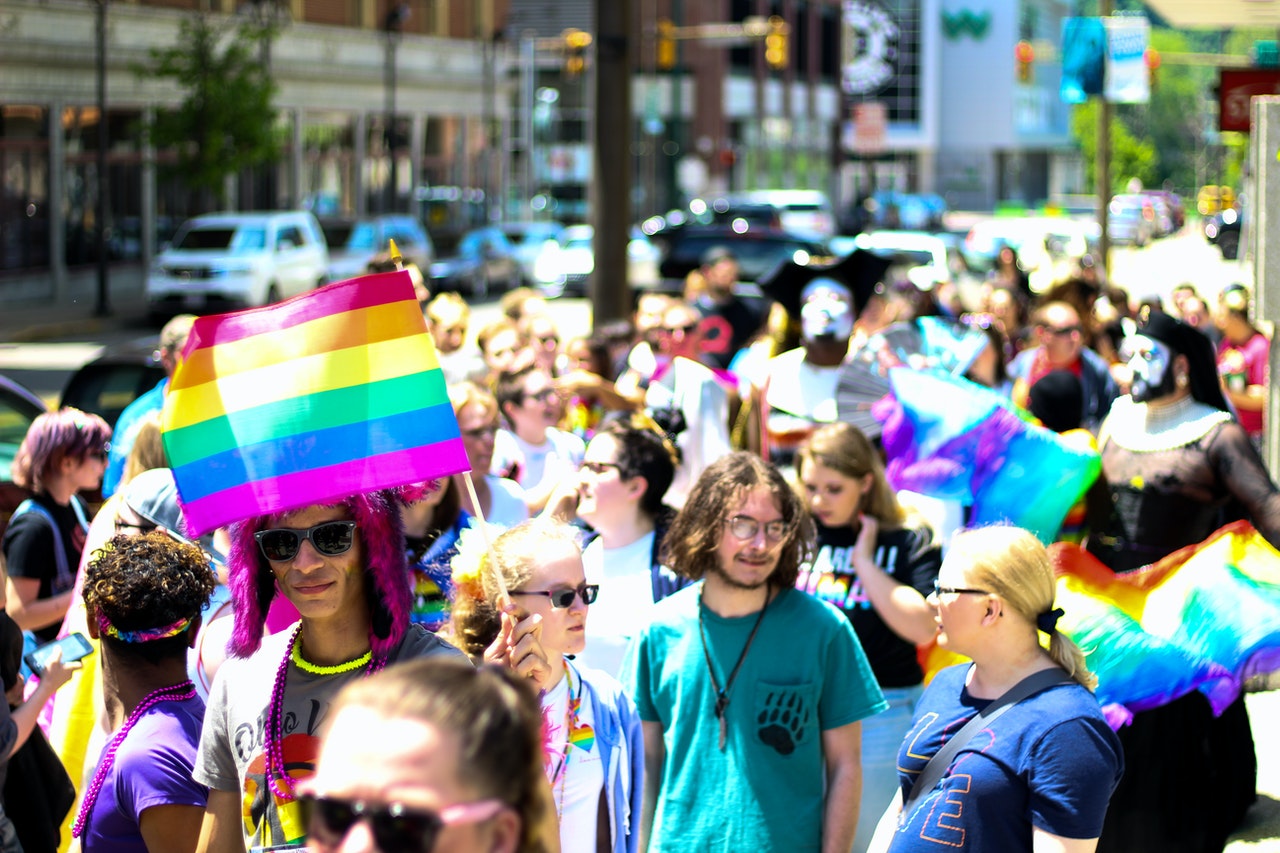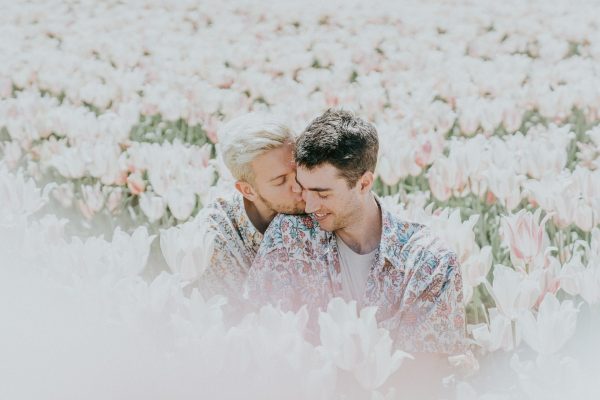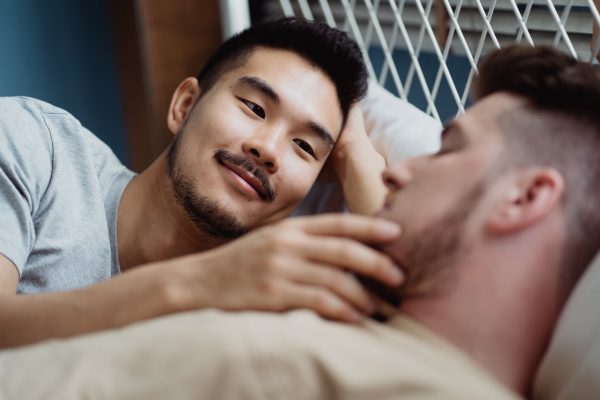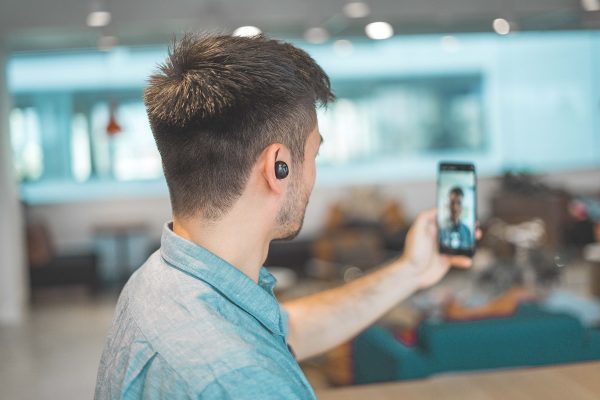Rainbow festooned festivities full of glitter, sequins, and boas are signs of progress made. The progress that is increasingly coming under fire in the forms of violence, rhetoric, and quasilegal attacks on the rights of the LGBTQ+ community. The community has unwittingly played a role in this by seeking assimilation with the community writ large.
Though this so-called assimilation, and even acceptance, is up for debate. “I worry a lot less about being ‘assimilated’ than about the mental health and physical safety of queer teens in a country debating (again) whether it is ok for teachers to even acknowledge their existence,” says Dr Lane Fenrich, distinguished senior lecturer in gender & sexuality studies at Northwestern. “Heck, I worry about the mental health and physical safety of LGBT adults, especially trans adults of colour.”
Dr Amin Ghaziani, professor of sociology and Canada research chair in urban sexualities at the University of British Columbia, notes that these are closely linked, “The history of gay bars is the history of trans people. We cannot think about one without the other.
“If you consider the Stonewall riots, as an example that has broad, even global recognition, then we know that members of the trans community were pivotal in the uprising, its motivational energy, and its effects in terms of affecting the American consciousness about sexuality, and the LGBTQ consciousness about politicizing our identities.”
These struggles, over time, for the right to exist in safety have become less radical and more accepted. Pride events are reminiscent of where we have been before, with similarities to the drag balls America has seen since the early 1920s. A history that has been remarkably inclusive in ways we haven’t seen as much as we’d like in recent years.
A contemporary of the prohibition-era drag balls Myles Vollmer, a sociologist wrote of them in 1933, “Physically, all types are there. Homosexuals thin and wasted, others slender and with womanish curves, others overfed and lustfully fat. Most of the younger homosexuals have pallid complexions with rather thin hair, due, perhaps, to overindulgence. There is a preponderance of Jews and the Latin Nationalities, although homosexuality is no respecter of races. Many of the men are of Polish blood. Negros mingle freely with whites. There seemingly is no race distinction between them.”
This celebration flew in the face of the customs and laws of the society at the time, providing a safe place for all manner of queer to come together and enjoy their right to exist. These temporary spaces, drag balls, were eventually replaced, following the repeal of prohibition, with more permanence in the way of gay bars.
These bars were places of activism and community from the civil rights area through the AIDS crisis and the quest for equality in the 90s. They were a mecca of sorts for LGBTQ people from all over, most accepting, and a lighthouse of hope in the sea of a society that continued to denigrate and abuse them.
They were, and are, such an important icon of the community that people have been known to call them just to hear the “happy laughter of other gay people.” Now, the success of the LGBTQ rights movement towards assimilation has, in part, led to their rapid decline. Though there is limited data, the existing studies show that the number of gay bars, from their peak in the mid1980s, has dropped by more than half.
“We’re not going to really understand the full impact of the loss of these spaces for a number of years,” says K Anderson, a cultural anthropologist with a podcast on this very topic. “There is an older generation of queers who are recognising and mourning the loss. Over the coming years, I think we’ll start to see more innovation, reimagining both the community and the spaces that hold them. People’s priorities and need for queer spaces have changed, and the scene needs to evolve to reflect that—hopefully, this means that there are spaces that aren’t exclusively centred around drinking and drugs, ones where people of all ages feel welcome. What that looks like exactly I don’t know, but we are a resilient and innovative community, so I’m excited to see what is to come”
“Assimilation is a double-edged sword. We spent years trying to prove that gay folks are equal and just the same as straight people. Now that we’ve done that—marriage, military, kids, et cetera—we seem to have dumbed down our once gay culture,” St. Sukie de la Croix, a gay historian and inductee of the Chicago LGBT Hall of Fame, told queer voices. “Gay bars, bookstores, and newspapers are disappearing. Is that good or bad? As a gay senior, I’m very conscious of the danger of clinging to the past and not accepting new things. However, it does seem a shame that what made us different and exciting is now being watered down.”
St. Sukie isn’t the only one worried about this loss of culture. Andrew Hayes, Vice President at World Business Chicago, agrees, “The Gay Pride Parade that began to help demonstrate the community’s collective power is today a travelling party, a drink fest. While the acceptance and assimilation have led the community to realize greater access to what others enjoy, it has also, in my humble opinion, given us less of point-of-distinction, too. Our once “rallying cry” has been silenced. We are now happily blended—but thinking back to the days of ACT UP and the need to protest for the rights denied us, but afforded others, united the community in ways we don’t see today.”
In preparation for June’s Pride month, young staffers in Hayes’ office passed around rainbow flags and other decorations. He continued, “Watching this unfold stopped me in my tracks. While I appreciate and am genuinely touched by the outward demonstration of support this was intended to represent, I couldn’t help but think that all those who fought for our rights, and died from discrimination in all its forms, were reduced to desktop flags. At that moment, having known friends who were dying weekly from AIDS, and having seen regular protests and fights for our civil rights, I wished for those younger than me, to see LGBTQ history as so much more than a desktop flag.”
These experiences differ based on circumstances. Dr Ghaziani continues, “Attitudes about homosexuality have liberalized at unprecedented rates, as we can see from the Gallup poll. Sometimes, we falsely assume that aggregate statistics about public opinion apply to all LGBTQ people. This is not true, unfortunately. Cis white gay men and women have a set of experiences that are different from racialized and trans communities. As an example, we see that these groups are systematically more susceptible to anti-LGBTQ violence.”
“We receive the protection of popular culture, as the ways we look, and love, are synthesized by the mainstream. The benefit is we may become less threatening. We lose being viewed as radical. At the same time, we become diluted and divided as other ‘isms’ like sexism, classism, elitism and racism rise to the surface,” says Dionne ‘Choc Tréi’ Henderson, Executive Director of Paragon Coco. “In other words, we sacrifice the uniqueness that binds us together by mimicking heterogeneous customs.”
These ‘isms,’ and others, sometimes make gay bars themselves less than inclusive. This leads to finding other venues—such as cruising places or, recently, apps. Dr Ghaziani adds, “Cruising places have been foundational to the history and culture of gay men. In the 1960s and 1970s, political liberation was inextricable from sexual liberation. To have sex was a radical act, a liberatory act, an act in the service of pleasure as well as politics.”
Though cruising places still exist, one needs only look at Squirt.org to find out which neighbourhood park or library restroom hosts men looking for sex with other men; other online platforms have taken place for that risky activity. “While platforms such as Grindr and Scruff make hooking up a virtual certainty for those looking to do so, they aren’t the wild ruptures in the sexual culture they’re often depicted as. Neither do they impede the formation of friendships or the development of communal ties,” says Dr Fenrich. “Although I’ve sat through many a dinner party where such suspicions were aired as certainties.”
Though, depending on perspective, there is much still radical about the LGBTQ scene in our city. Many LGBTQ-owned gay bars and businesses serve the community as a space to congregate and affirm—just not as many or in the same ways as in their heyday.
Celebrate how far we’ve come and brace yourself for the work to be done by enjoying libations and liberation at your favourite queer bar.






